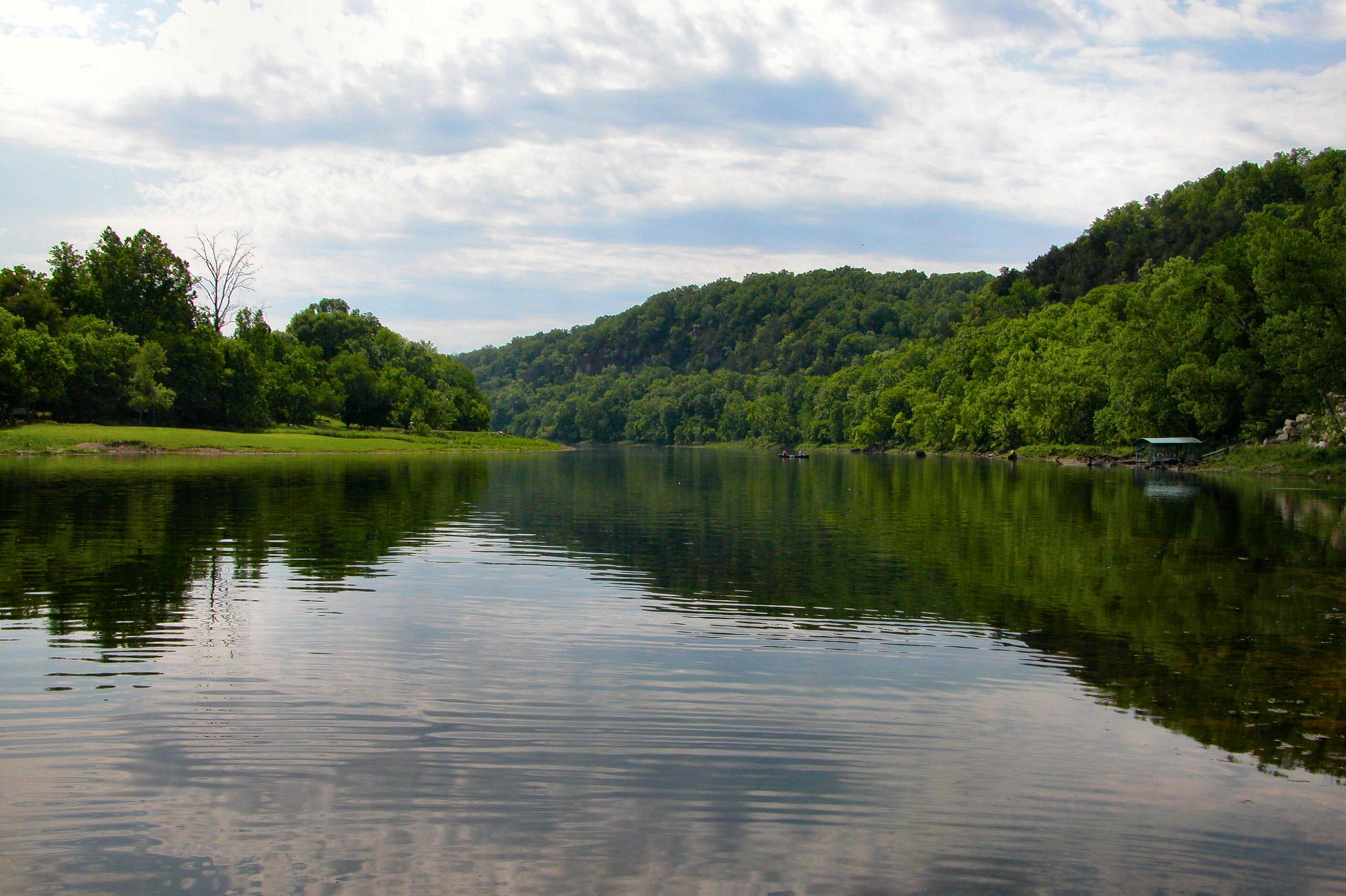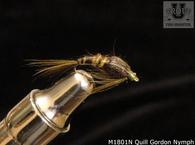
The White River system starts at its headwaters in the Boston Mountains of Northwest Arkansas and flows thru Southern Missouri reentering Arkansas past Batesville. The White River continues 720 miles interrupted by some eight dams until it confluence with the Mississippi River. The headwaters consist of small pools punctuated with shoals as it twists and turns through huge limestone bluffs, pastures and farmlands. The term White River refers to its crystal waters.
However when anglers refer to the White River, they usually mean the 150 miles of cold water that is made up as tailwaters of four dams in Arkansas and one in Missouri. These waters provide excellent habitat for trout and have made the river one of the top twenty rivers in America. Brown and rainbow trout are stocked below all five of the dams. Many of the stocked trout will average 12 inches in length.
But for this river review, we shall confine our comments to that portion below the Bull Shoals Dam and Blue Shoals Lake near Mountain Home, Arkansas. This was a smallmouth bass fishery before the dam was constructed. After the dam was built, the water stayed cool enough to provide forty-four miles of some of the best brown trout fishing in the country. The actual length of the tailwater is over a hundred miles.
The White River is very wide, up to one-hundred yards in places, with some huge pools as well as fast flowing riffles called "shoals" by the locals. Slick limestone rock makes up much of the stream bed but there are gravel bottoms and even weed beds in the stream. Minnow, crustaceans, crawfish, sculpin and aquatic insects provide a lot of food for the trout.
The White River has been known to hold the North American brown trout fishing record at times and some of the monsters have weighed over 30 pounds. Of course very few browns reach that size but you can expect to see browns that average in the 5 to ten pound range and occasionally one in the 10 to 20 pound range. Bull Shoals to Cotter is the stretch best known for monster browns. For this reason Cotter is ofter referred to as the “Trout Capital of the World”. The rainbows are typically in the 3 to 6 pound range with some ranging as large as ten pounds.
The AGFC has established two catch and release areas where trophy size rainbow can be caught. One stretches for ½ mile below the Bull Shoals Dam and another is a one mile section at Rim Shoals. In the lower reaches of the White, the water warms up and supports populations largemouth, smallmouth and spotted bass. Also channel catfish are stocked as well.
Fly Fishing the White River:
The White River tailwater below Bull Shoals Dam provides a wide variety of different types of water. There are stretches of pocket water, long deep runs, shallow riffles, long pools, flat water, rough water and just about everything in between. Trout measuring between sixteen and twenty inches are very common. Brown trout are usually discussed in terms of pounds rather than inches. There are four catch and release areas on the river. They probably have the majority of the larger trout although they are found throughout the length of the river.
The water levels control everything. The strategy you use depends almost entirely on the amount of water being released through the dam. Normally, the first six months of the year, the water runs high. This is when most anglers go to streamers. Sink tip and sinking lines are sometimes used to help get the streamers down. In early May and June the water is sometimes at a moderate level. This is a good time to fish the river using nymphs.
During late June, July and August, the direct overhead sun makes catching the nocturnal brown trout more difficult. You best opportunities come just past daybreak and late in the afternoon and on into the evenings. During the summer and on into the fall you will usually find the water levels are lower than normal. Low water makes for the best dry fly fishing opportunities. Although there are few hatches of aquatic insects, you can catch plenty of trout on terrestrial imitations such as hoppers, ants and beetles. You will usually find the lowest water from September through December.
From late October on into January, the browns are spawning. They are much easier to catch then but the trout should not be bothered when they are on their redds. This is very unsportsmanlike and can hurt the success of the spawn. There are plenty of other trout that can be caught during the spawn period without having to revert to trying to catch them when they are on their redds.
Caution:
The White River tailwater, like many other tailwaters, is subject to strong and variable currents. The flows in the White River can fluctuate quickly (from a few hundred cfs to 22,000 cfs) so anglers who want to wade should pay close attention and keep a visual indicator of the conditions. Call 870-431-5311 to listen to the Army Corps of Engineers well maintaind recorded message service. Also consult these flow charts at Highway 341. .
Spring:
Spring time can be great provided the water releases are supportive. There are some aquatic insect hatches that can provide good dry fly fishing opportunities. Streamers will be effective fished deep.
Summer:
The summer is the most popular time for fly fishing the White River. Being that the water is from dams, the water stays cool even on the hottest days. Lower water levels make dry flies a good option as well as terrestrials like ants, hoppers and beetles.
Fall:
Autumn provides the best opportunity to catch a trophy size brown trout. However, there are off limit areas and times during he spawning season for the brown trout. The Fall season is a good time for float trips on the White.
Winter:
Winter is the toughest time to fish the river but it is possible to have some very good days as some of the largest browns are caught in the winter. Midges patterns are productive during the winter months.
There are 24 public accesses that are maintained by the AGFC and maps are available in their free fishing handbook. These areas reach from the Jim Griffin Access area down to the Guion Access which is 92 miles below the Blue Shoals Dam and is the last stocking point on the White. Much of the land along the river is privately owned so be sure to get permission before you trespass.
View Midwest Streams in a larger map





